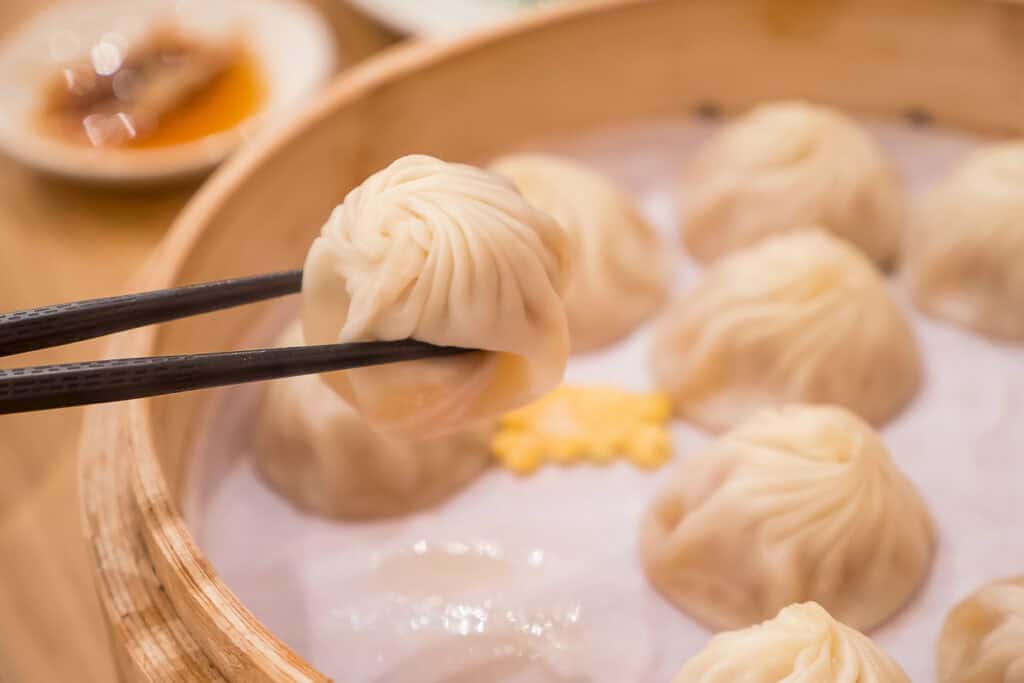Dumplings have emerged as a surprise powerhouse in the global food scene, combining universal appeal with profitability. In 2025, they’re fueling success for restaurants, food trucks and frozen food empires. From savory meat-filled classics to sweet, dessert-ready creations, dumplings are in the spotlight, evoking nostalgia, offering comfort and convenience and driving a multi-billion dollar industry.

From sustenance to therapy
Dumplings have always been a unifying force, connecting cultures and families through their universal appeal. When Kelly Chang Rickert, a Los Angeles-based lawyer, couldn’t travel to Taiwan to visit her family during the pandemic, she decided to recreate their famous pork-and-cabbage dumplings at home. “Making dumplings from scratch with my daughters became a way to stay connected to our roots,” she told Eater LA. “It was therapeutic and delicious at the same time.”
And the feeling is global. In Poland, dumpling-making parties are a cherished tradition during holidays. Marta Kowalska, a Kraków-based chef, describes pierogi-making as a team sport. “The kitchen becomes a place of laughter and storytelling as we fold each dumpling,” she says. “By the end, we’re exhausted but happy.”
Convenience meets tradition
Where once you needed a grandmother’s personal touch, modern consumers’ demand for convenience has given rise to frozen and ready-to-cook dumplings that taste almost as good as the ones Grandma used to make. According to a report by Business Research Insights, the global frozen dumplings market was valued at $5.3 billion in 2023 and is projected to surpass $12 billion by 2032. Shifting consumer lifestyles and increasing globalization are the reasons. “The demand for quick and easy-to-prepare meals has surged,” the report notes. “Frozen dumplings offer a hassle-free solution for delicious and satisfying food.”
For busy New York City resident Tim Wu, frozen Shanghai soup dumplings, or “xiao long bao,” are a lifesaver. “After a long day at work, it’s amazing to have restaurant-quality dumplings in my freezer,” he says. “I pair them with chili crisp and it feels indulgent but effortless.”
Adapting with the times
As dietary preferences evolve, so do dumpling offerings. With more and more people choosing plant-based diets, vegan dumplings are on the rise, featuring fillings like mushrooms, tofu and jackfruit. Kristy Turner, plant-based food blogger at Keepin’ It Kind, recalls introducing her parents to vegan dumplings on a recent visit. “My dad was skeptical at first, but after the first bite of mushroom-and-spinach dumplings, he was hooked,” she says. “Now he insists on keeping a stash in the freezer.”
In San Francisco, Dumpling Time — a restaurant that offers everything from truffle soup dumplings to plant-based gyoza — has become a popular spot for adventurous eaters. Owner and chef Richard Wang says, “Guests love the idea of mixing classic recipes with modern, innovative ingredients. It keeps the tradition alive while pushing it forward.”
Dumplings in the digital age
Social media has played a significant role in popularizing dumplings, sparking new trends and conversations. Viral posts showcasing colorful dumplings or creative twists, like fried dumplings stuffed with kimchi mac and cheese, have drawn younger, and perhaps even hungrier audiences.
Home cooks like Abby Chen in Portland share their dumpling-making journeys online. “One video of me crimping dumpling edges went viral, and suddenly people were asking for tutorials,” she says. “It’s incredible how something so simple resonates with so many.”
Social media momentum has fueled a new generation of dumpling entrepreneurs, too. MìLà founders Caleb Wang and Jen Liao transformed their Bellevue, Washington, food stall Xiao Chi Jie into a nationwide phenomenon by perfecting the art of frozen soup dumplings. Their xiao long bao now grace the freezer aisles of Costco, Target and Sprouts, bringing restaurant-quality dumplings to home kitchens across America.
MìLà’s collaboration with famed pastry chef Dominique Ansel pushed boundaries even further. Their black sesame chocolate lava dumplings, inspired by traditional Chinese black sesame-filled glutinous rice balls, became a social media sensation. “The fusion of black sesame and chocolate creates something both surprising and nostalgic,” says Liao.
Economic and cultural significance
Dumplings aren’t just food — they’re a way to preserve and celebrate cultural identity. For Chinese-American chef Shirley Chung, dumplings are a bridge between generations. “My grandma taught me how to fold dumplings when I was five,” she shared with Bon Appétit. “It’s a skill I’ve passed down to my niece, and every fold is a connection to our heritage.”
Dumplings are a source of economic opportunity, too. In 2014, immigrant entrepreneur Mei Lin opened The Dumpling Dream in Los Angeles, a small shop specializing in handmade dumplings. Now Lin’s thriving business employs more than 30 people and ships frozen dumplings nationwide. “Dumplings gave me a way to build a future while sharing a piece of my culture,” she says.
In Minneapolis, Bao Wow Dumplings uses locally sourced ingredients to create unique flavors, like wild rice and miso butter. Co-owner Tanya Patel says, “We wanted to showcase how dumplings can tell a story about where they’re made.”
Dumplings always deliver
The future of dumplings looks bright, with more innovation on the horizon. Restaurants are experimenting with unexpected fillings like lobster bisque or roasted beet and goat cheese. At the same time, tech-savvy brands are perfecting plant-based fillings and eco-friendly packaging to meet sustainability demands.
Dumplings have proven to be more than just a passing food trend. Their versatility, cultural significance and ability to adapt to modern preferences have solidified their place in hearts, stomachs and kitchens worldwide.
Robin Donovan is the author of more than 40 cookbooks and the founder and creator of All Ways Delicious, a food site loaded with easy recipes for the best dishes from around the world. Her writing and recipes have been featured in major media outlets including Huffington Post, MSN, Associated Press, Buzzfeed, Cooking Light, PopSugar, Chicago Sun-Times, Fitness, Parade, Mercury News and many others.